Stories > Technology In The Artistic Arena
Technology In The Artistic Arena
The SIF’s Arts for Good Fellowship went completely digital for the first time as practitioners from around the world rallied to continue using the arts to empower communities.
BY ZHOU XIJIE
mid flight cancellations, border closures and disruptions caused to daily life by the Covid-19 pandemic over the last two years, a few things have remained constant. One of these is the propensity for innovation in the face of challenges. This was amply demonstrated in the fourth – and latest – edition of the Singapore International Foundation (SIF)’s annual Arts for Good (A4G) Fellowship, which came to a successful conclusion last February.
To meet the evolving challenges of a changing milieu, the latest edition was themed “Arts and Well-being for Children and Youth in a Digital Future”. It sought to explore how arts practitioners can harness the synergy between arts and technology to bolster the mental, social and emotional wellness of young people in a digital age. And true to its aim of fostering a diverse community of practice committed to forging positive social change through the arts, the programme brought together 32 artists, arts practitioners and professionals representing 12 nations.
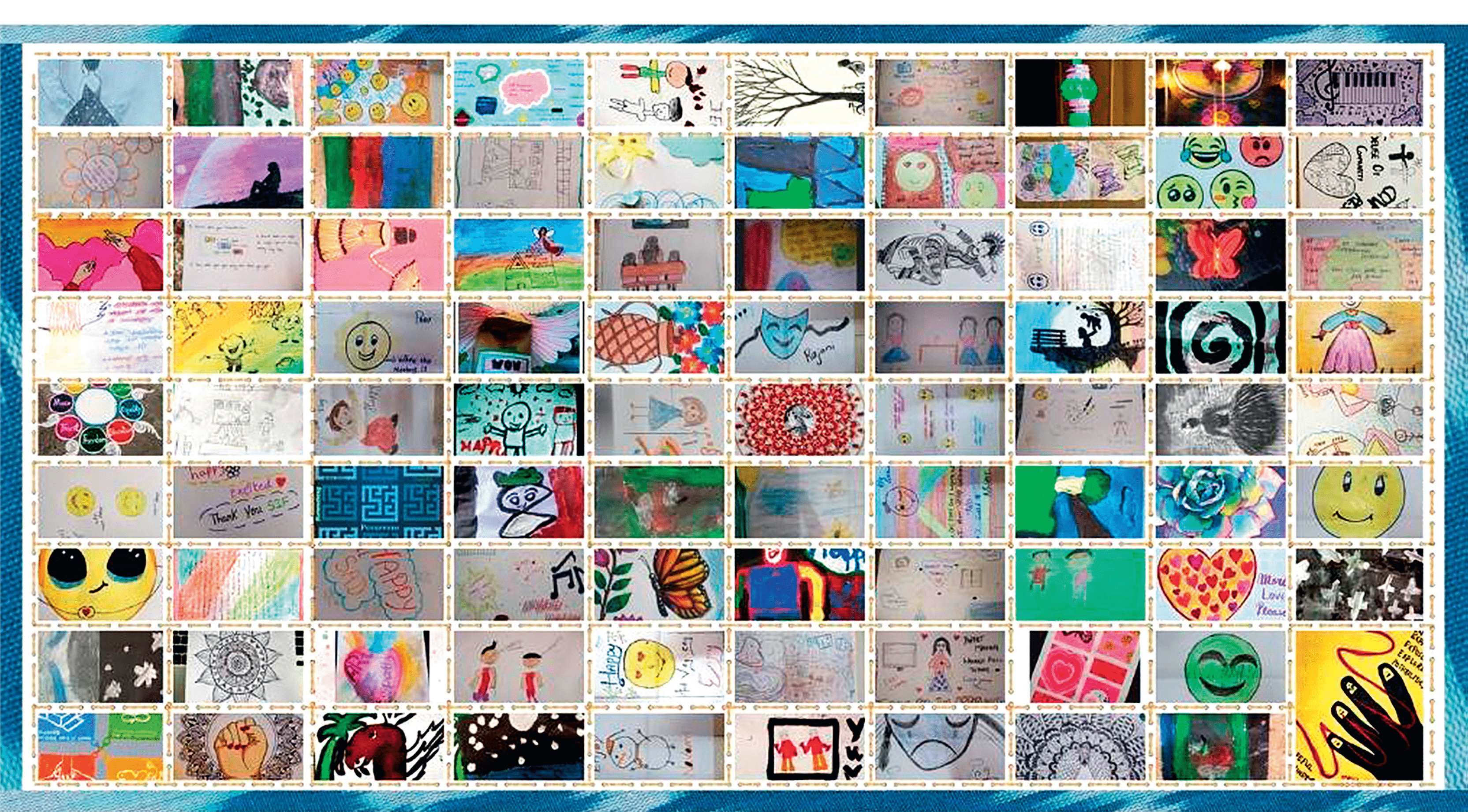
India-based NalandaWay arts nonprofit collaborated with Kai Brennert, an A4G Fellow from the current batch, to evaluate the participating A4G Fellows’ and children’s experiences in the community projects. Their reflections were stitched together to create a digital quilt.
Also returning to the programme, in the capacity of partner and facilitator, were alumni Sriram Ayer and Nilisha Mohapatra, who are respectively the founder of NalandaWay Foundation (NW) and a trainer at Partners for Youth Empowerment (PYE). NW, which is located in India, uses visual and performing arts to provide holistic education and strengthen the mental health of children from disadvantaged communities, while the US-based PYE trains adults to lead transformative youth programmes that promote equity. This is already the SIF’s third time working with NW, and its second collaboration with PYE.
CREATIVE CONFIDENCE
Like many of the SIF’s programmes, the A4G Fellowship had gone fully online for the first time to get around the restrictions forced by the Covid-19 pandemic. Beginning in Singapore and ending in India, the six-month fellowship comprised several elements that gave Fellows an opportunity to experience peer learning on the techniques and tools required to work effectively with children and youth. This included dialogue sessions with arts practitioners and social innovators, UnConference sessions held among the Fellows themselves, as well as monthly webinars to build their capacity in cultural mapping and creative models for online engagement.
This culminated in the launch of four community projects for underprivileged children and youth in Chennai, India. One such project was aimed at a group of girls – aged 13 to 14 – to build confidence and raise their levels of self-awareness through music. These girls live in unstructured urban settlements, with the majority of their parents being daily wage earners who work as auto drivers, tailors, housekeeping and in nearby shops and markets.
Among those involved in this project was A4G Fellow Debashree Das Gupta, a freelance Indian classical music teacher who specialises in musical therapy and healing. Together with members of NW, Gupta and other Fellows held online workshops that used journaling, storytelling and virtual musical instruments to encourage the young girls to express and discover themselves.
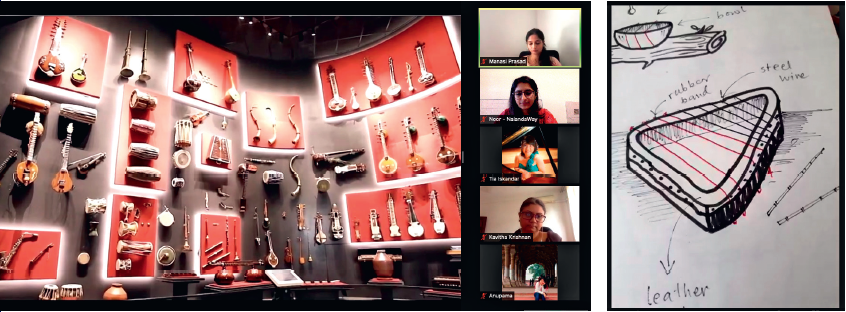
A4G Fellows participated in an interactive session by Indian Music Exeperience Museum and learnt more about the Indian music culture.
“THE SESSIONS ON INCLUSIVITY, SOCIAL INNOVATION AND ARTISTIC VENTURES ALL ENCOURAGED ME TO THINK AND ATTEMPT THINGS BEYOND MY COMFORT ZONE. THE ENTIRE FELLOWSHIP PROGRAMME WAS SIMPLY LIFE-CHANGING FOR ME,” SAYS A4G FELLOW DEBASHREE DAS GUPTA.
Another A4G Fellow, Nor Azizah Abdullah, Acting Head of Arts & Community Development at The RICE Company Limited – a Singapore-based non-profit arts organisation – facilitated a virtual workshop that integrated storytelling with stop-motion animation and augmented reality. It aimed at educating young girls in Chennai about the different types of puppets around the world, while helping them build confidence by expressing their creativity in the process of making puppets, composing music, and recording videos of their performance.
For the Fellows, the arts has taken on greater significance during the pandemic. Azizah notes that artistic activities can be a good mental distraction to promote calmness, alleviate anxiety, and prevent loneliness during these difficult times when people have to adapt to the New Normal.
Das Gupta shares the same sentiment. “There is an entire field of study that shows how art can be an effective form of therapy for anxiety issues. Take, for instance, the act of putting on some music to decompress after we get home from a long day in the office. Just the act of listening to music helps us to relax,” she says. “Personally, writing poetry or drawing helps me to calm down. Through my training in music therapy, I have also seen patients benefit to a great extent through music.”
RISING TO THE CHALLENGES
While participants were heartened to see creative endeavours thrive virtually, they also acknowledged the challenges that come with taking a programme online.
“In my hometown in the Philippines, there are often disruptions to the electricity supply, and the Internet connection can be unstable too,” says A4G Fellow Micah Dela Torre Hilotin. “There were times during the Fellowship when I had to rush to the nearest café in our town to get access to electricity and a stable Wi-Fi connection!”
Hilotin, who is Chief Operating Officer of Artdialogo Asia, a social enterprise that promotes the arts and creates cross-cultural exchanges, adds that it can be more difficult to read body language and facial expressions on a screen, compared to when interacting with others face to face.
“It was really inspiring to see a community in Singapore utilising innovative design that demonstrates compassion, gives importance to, and empowers those with special needs.”
Micah Dela Torre Hilotin, CEO, Artdialogo Asia and Arts For Good Fellow
Das Gupta echoes these views. “Hosting a successful virtual workshop requires sufficient interactivity to sustain the attention of participants,” she explains. “Besides using different applications that would make the presentation of content creative and attractive, we also need to take into account our own facial expressions and the way we speak, to keep the virtual sessions as alive and real as possible.”
INNOVATION AND INCLUSIVITY
Indeed, as they played the role of mentors and educators to youths and children, Fellows, too, walked away with precious learnings of their own.
For Azizah, one eye-opening experience during the Fellowship was an interactive left: Participants from around the world were given a virtual tour of Singapore’s Enabling Village, a purpose-built hub featuring learning institutes and social enterprises that educate and upskill people with disabilities and help them to become financially independent. murder mystery performance hosted online by BODY X Productions, an immersive-experiential theatre production company from Singapore.
“Participants were given a selection of Zoom links to follow the story. The creator also used different Zoom accounts to bring the participants to new rooms where they could find clues to solve the mystery,” she shares.
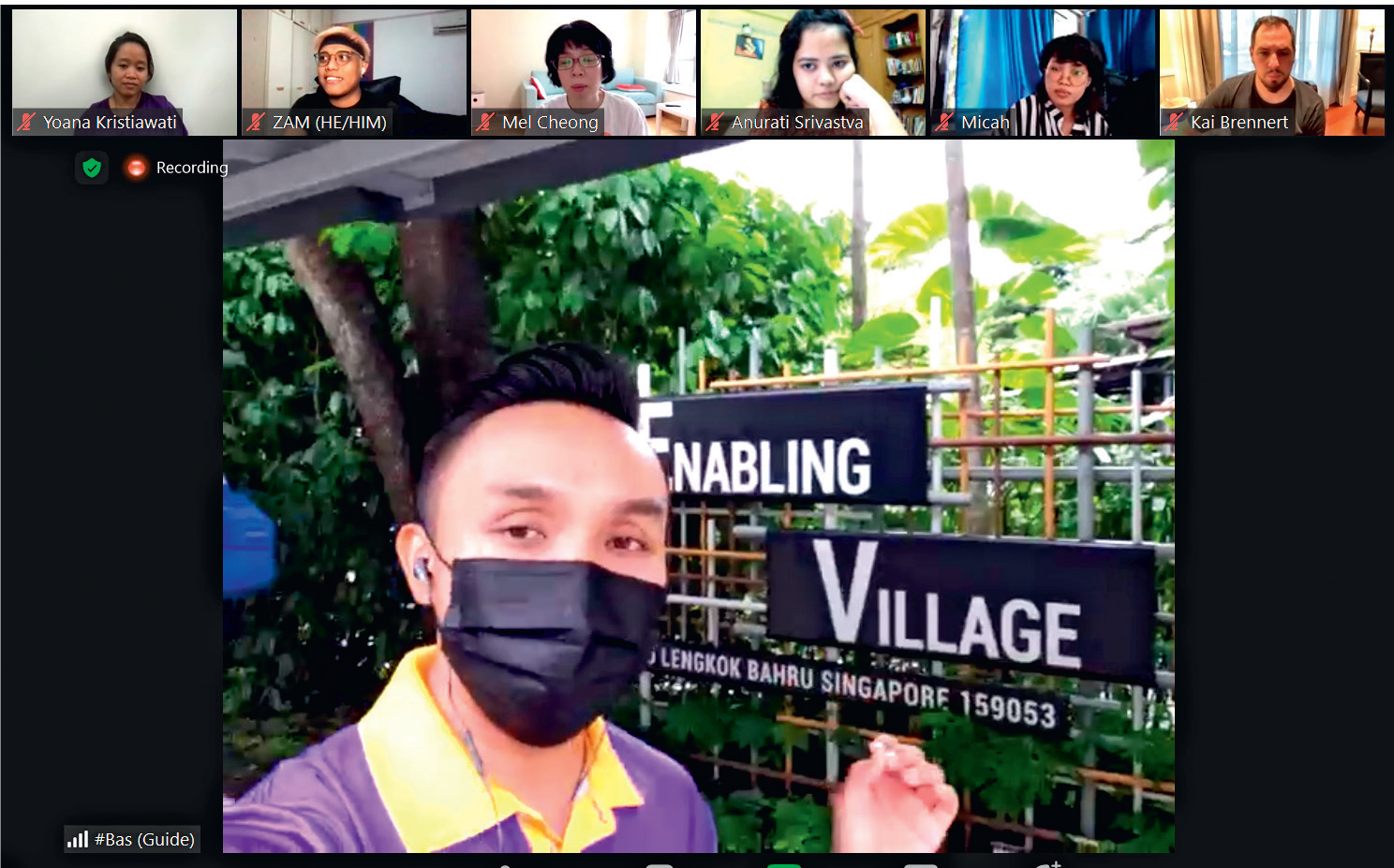
Participants from around the world were given a virtual tour of Singapore’s Enabling Village, a purpose-built hub featuring learning institutes and social enterprises that educate and upskill people with disabilities and help them to become financially independent.
This experience, Azizah adds, showed how arts practitioners can best utilise digital technologies – not just as a substitute for physical events, but as added elements to enrich their work. “Seeing the use of technology was definitely enlightening and gave me some ideas on how I can develop my own virtual programme to teach technology and art history.”
As a testament to the inter-disciplinary nature of the Fellowship, Hilotin said she was touched by how the Enabling Village, a project by SG Enable and the Ministry of Social and Family Development, incorporates elements of universal design, employment and employability to address inclusivity for people with disabilities.
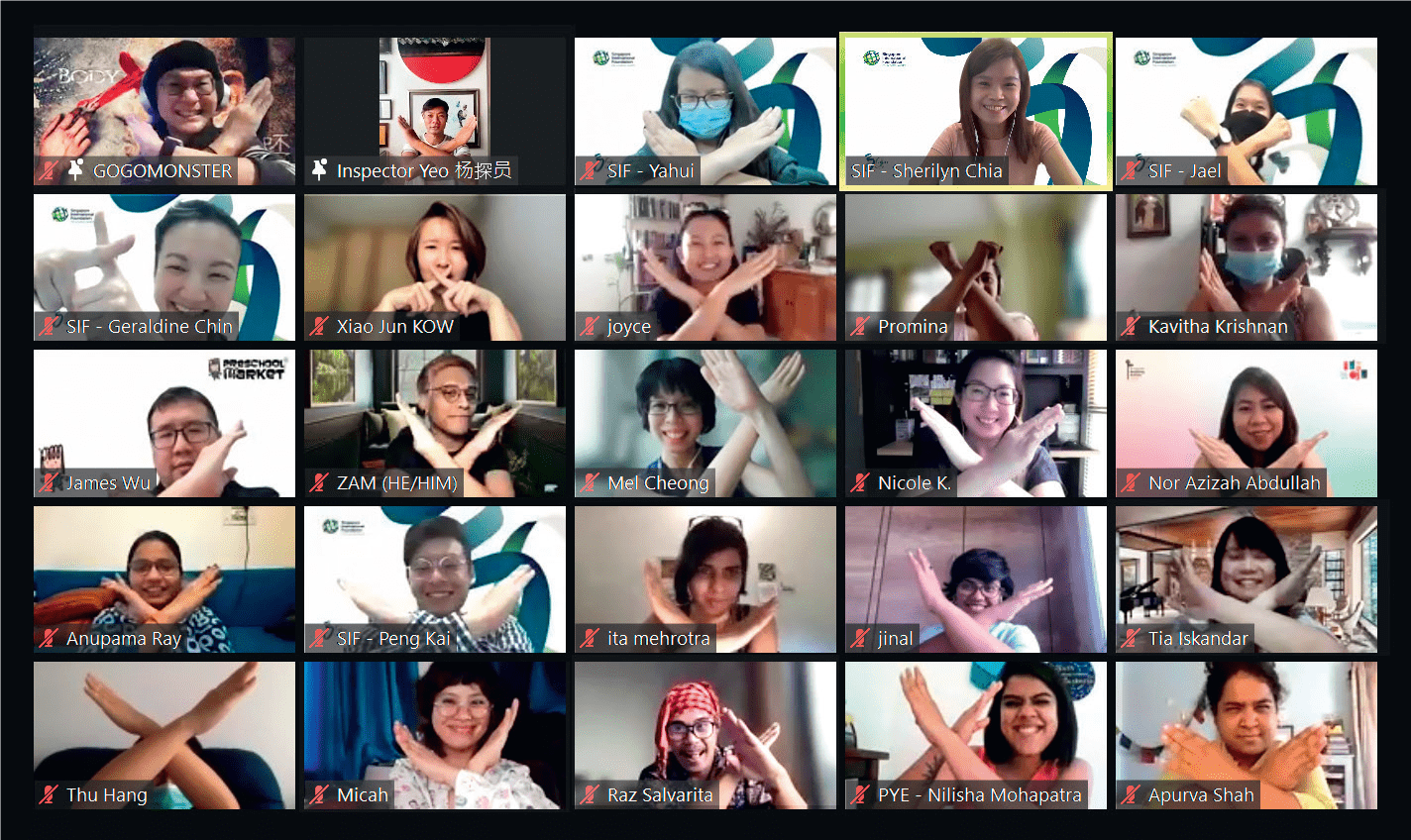
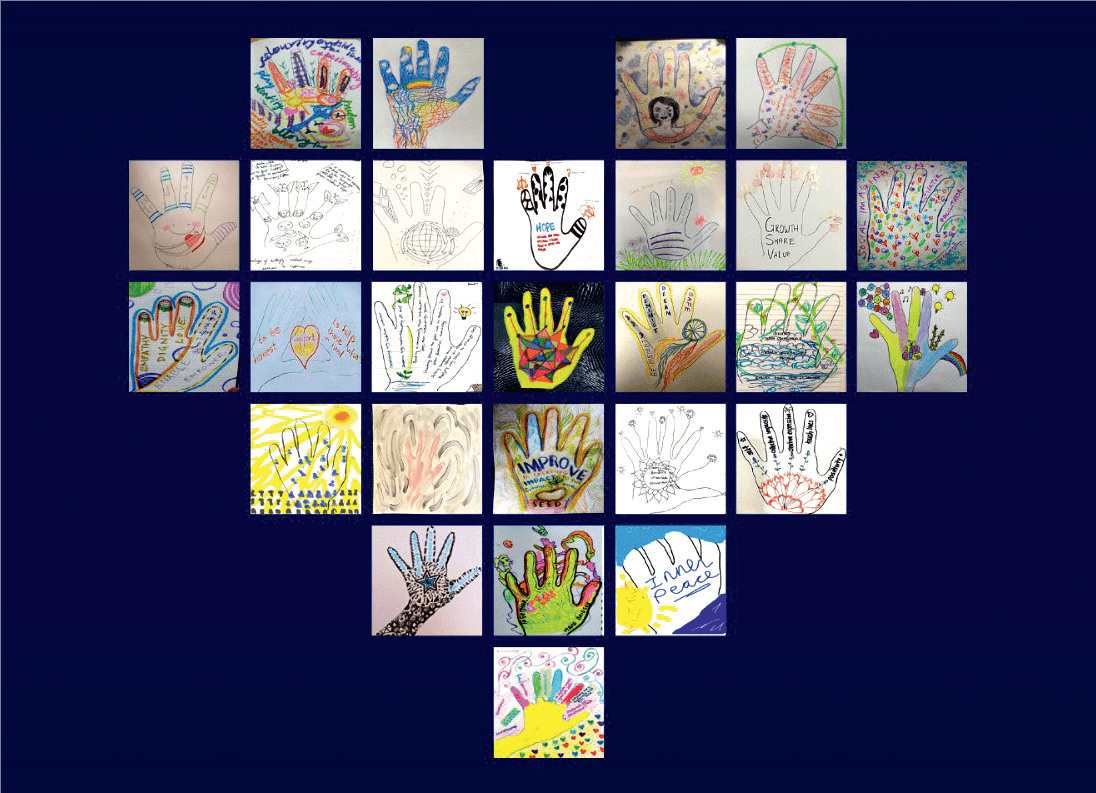
An interactive murder mystery session by Singapore-based theatre company BODY X gave participants ideas on how to create engaging digital programmes; in yet another session, participants described their inner feelings on drawings of their palms.
“SEEING THE USE OF TECHNOLOGY WAS DEFINITELY ENLIGHTENING AND GAVE ME SOME IDEAS ON HOW I CAN DEVELOP MY OWN VIRTUAL PROGRAMME TO TEACH TECHNOLOGY AND ART HISTORY,” SAYS A4G FELLOW NOR AZIZAH ABDULLAH.
“It was really inspiring to see a community in Singapore utilising innovative design that demonstrates compassion, gives importance to, and empowers those with special needs,” she says. “I’m planning to incorporate everything I have learnt from the A4G journey into my organisation’s future programmes. I’m truly excited about what we can build in the future and what projects we can come up with, especially when the borders re-open fully.”
Hilotin hopes that the newfound connections will lead to further collaborations with her contemporaries. “I am thinking of inviting some of my SIF Arts for Good Fellows to become resource speakers and workshop facilitators to inspire our participants to create an impact in their chosen communities,” she says. “We will also look at forging partnerships with each other’s organisations to widen our networks and build stronger advocacies for the causes we believe in.”
Das Gupta echoes Hilotin’s excitement, noting that the Fellowship was an invigorating learning experience that forced her to improve her skills. “The sessions on inclusivity, social innovation and artistic ventures all encouraged me to think and attempt things beyond my comfort zone. The entire Fellowship programme was simply life-changing for me,” she concludes.
